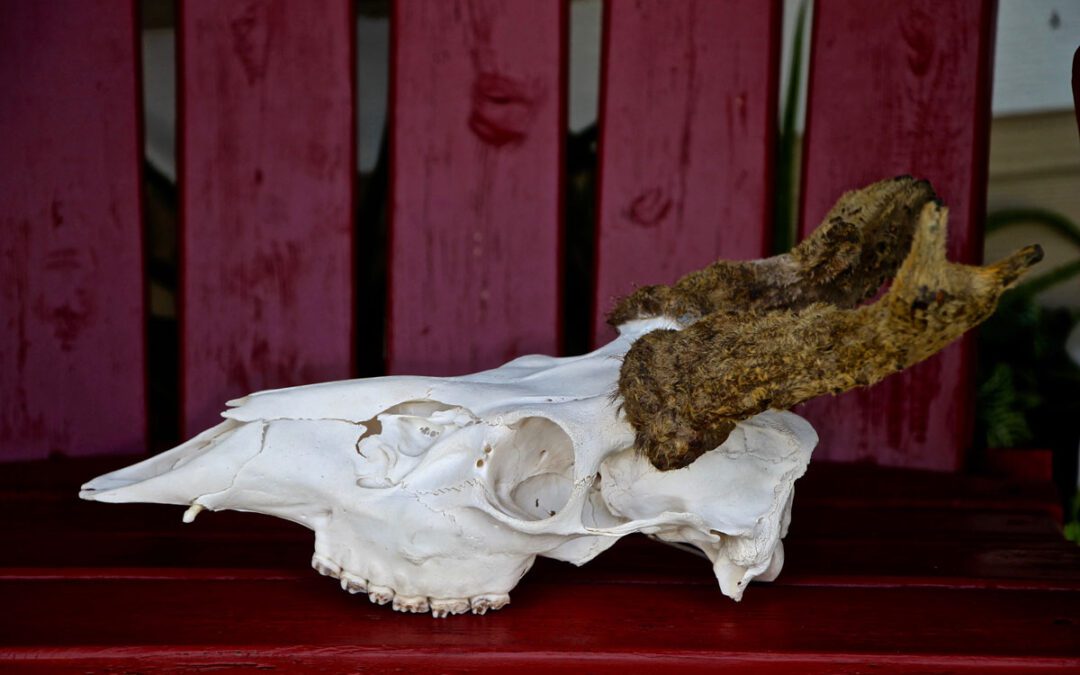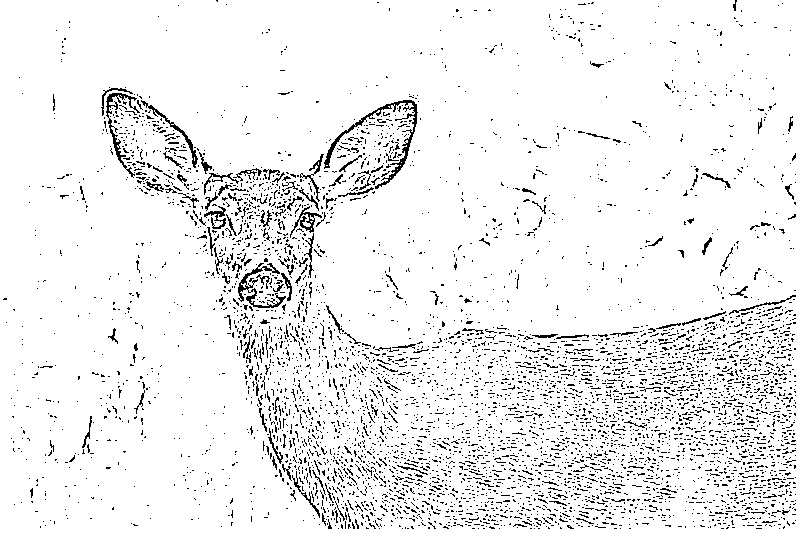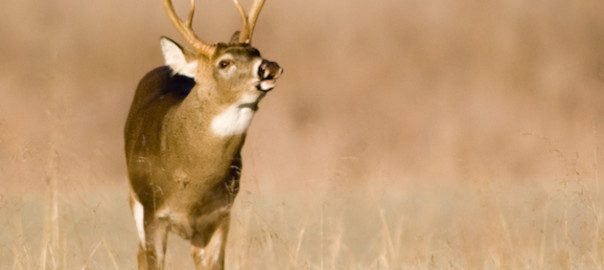A: Congratulations to your friend on taking a truly rare white-tailed deer. Whitetails do on occasion have small almost peg-like upper canine-like teeth like an elk and their kin. Depending upon who is asked, such “fangs” occurs at a rate of one in possibly 10,000 to 20,000 whitetails. When it does occur it is more prevalent in bucks than whitetail does. Generally too, such teeth occurs more frequently in southern whitetail rather than those found in the northern climes. However, upper canines have been seen in whitetail throughout their range from Canada into central Mexico. They are occasionally seen in mule deer. I cannot find any reference to them having been found in Columbian blacktails or Sitka blacktail deer. I suspect they do occur in those two deer species as well.
Research conducted in New York during the 1960s found 25 whitetails with canines, out of a total of 18,000 checked, 0.14 percent. In Michigan, 2.4 percent of the deer checked in the northern upper peninsula had one or two canines, whereas 0.7 percent of the deer checked had them in the lower upper peninsula. During those same years in Florida it was determined 4.2 percent of the deer had upper canines. Most states and provinces have produced whitetails with upper canines, but they are always rare. Again, upper canines are more prevalent in bucks than does.
These “vampire deer” in all likelihood comprise less than one percent of the total deer population in North America.
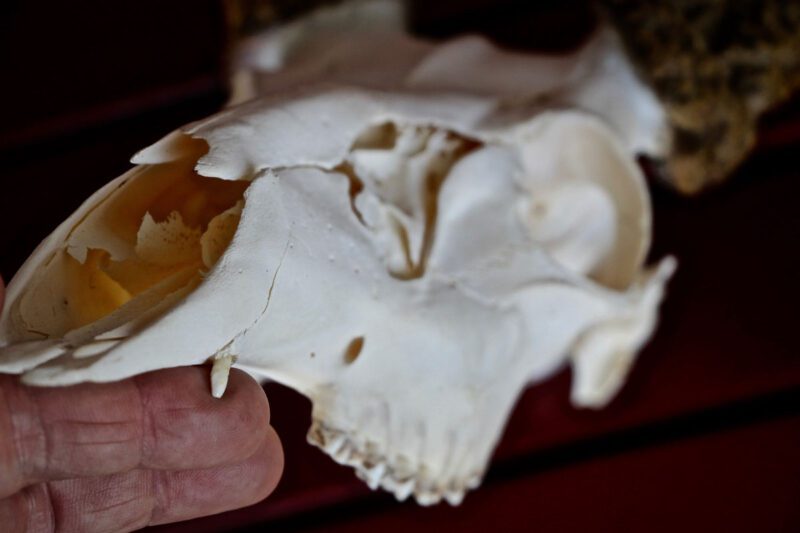 Normally whitetails have the same number of teeth as we humans, 32. But those with upper canines have either one or two more.
Normally whitetails have the same number of teeth as we humans, 32. But those with upper canines have either one or two more.
Why upper canines in whitetails? Likely it is a genetic throwback to eons ago when the ancestors of whitetails indeed had upper canines; this possibly for protection, for battle, and quite possibly because they may have been omnivorous, meaning they ate both vegetative matter and meat. Even today on rare occasions some deer will eat birds, or can be seen eating viscera from recently killed deer. As a hunter and wildlife biologist I have found on rare occasions found-dead birds, as well as dead mice in a whitetail’s rumen.
In looking back to the Miocene epoch, seven million years ago, there appeared a deer-like animal in Asia’s fossil record which had upper canines and no antlers (like today’s Chinese Water Deer) called Dremotherium. Shortly thereafter fossil records suggest a split into two types of Dremotheriums those with “fangs” and those with antlers, although some species of deer such as the muntjac have both prominent antlers and protruding upper canines. Over time as antlers evolved and became larger, prominent “fangs” or upper canines started disappearing.
Have a hunting- or wildlife-related question for Larry? If so, send it with the subject line “Weishuhn Wednesday” to editorial@sportingclassics.com. Each Wednesday we’ll pick one of your questions for Larry Weishuhn to answer.
Dr. Valerius Geist an expert in the field of deer evolution suggests the black spot located on today’s whitetail deer’s lower jaw developed there so upper canines were more obvious. For the most part, upper “fangs” disappeared, but the black spot remains.
 From about five to seven million years ago antlered versions of the Dremotherium crossed the Bering Land Bridge from Asia into
From about five to seven million years ago antlered versions of the Dremotherium crossed the Bering Land Bridge from Asia into
North America and over thousands of centuries evolved into the deer species we have today.
As a wildlife biologist/hunter I have thirteen whitetails and four mule deer with one or both upper canines. Three of those were does, whitetails, and the rest were bucks. Each had upper canines growing downward from a small “pocket” in the left and right maxillary.
One of the more interesting “vampire deer” I have seen was a buck my grandson, Andrew Johnson, shot several years ago in the Brush Country of South Texas in McMullen County. The deer was a six- or seven-year old “cactus” buck, meaning he never rubbed the velvet from his antlers and his antlers were never cast. Interestingly the buck had no obvious sign of having testicles. That buck’s upper canines were the largest and longest I have seen.
Congratulations, once again, to your friend for taking an extremely rare and interesting whitetail deer!

As a wildlife biologist, Larry Weishuhn established quality wildlife management programs on approximately 12,000,000 acres across North America with emphasis on habitat and animal populations. As a writer, he has served on staff on numerous publications in hunting, shooting and wildlife management and has long been involved with the highest quality outdoor television productions.
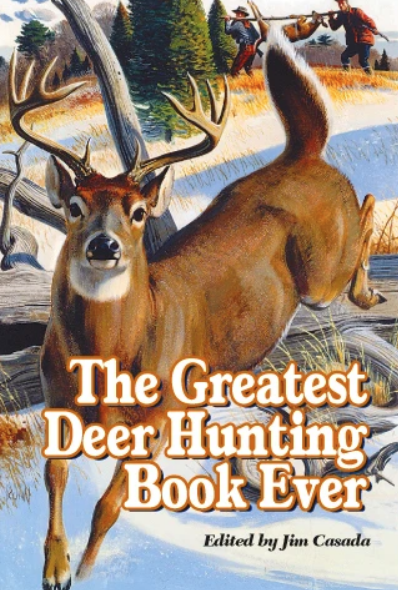 There’s something about the deer-hunting experience, indefinable yet undeniable, which lends itself to the telling of exciting tales. This book offers abundant examples of the manner in which the quest for whitetails extends beyond the field to the comfort of the fireside. It includes more than 40 sagas which stir the soul, tickle the funny bone, or transport the reader to scenes of grandeur and moments of glory.
There’s something about the deer-hunting experience, indefinable yet undeniable, which lends itself to the telling of exciting tales. This book offers abundant examples of the manner in which the quest for whitetails extends beyond the field to the comfort of the fireside. It includes more than 40 sagas which stir the soul, tickle the funny bone, or transport the reader to scenes of grandeur and moments of glory.
On these pages is a stellar lineup featuring some of the greatest names in American sporting letters. There’s Nobel and Pulitzer prize-winning William Faulkner, the incomparable Robert Ruark in company with his “Old Man,” Archibald Rutledge, perhaps our most prolific teller of whitetail tales, genial Gene Hill, legendary Jack O’Connor, Gordon MacQuarrie and many others. Buy Now

